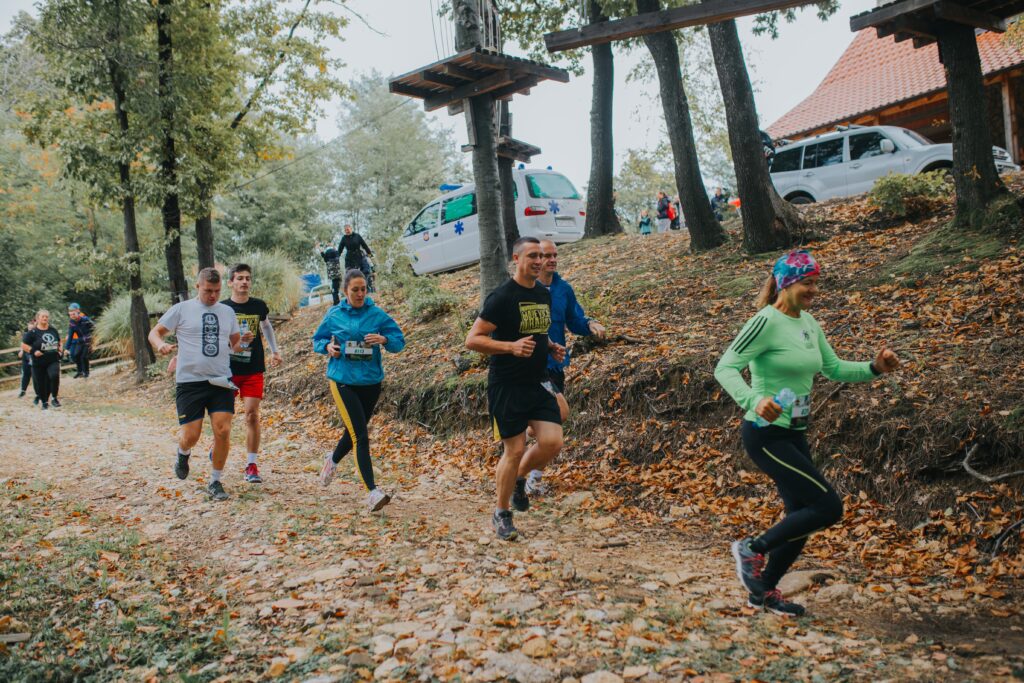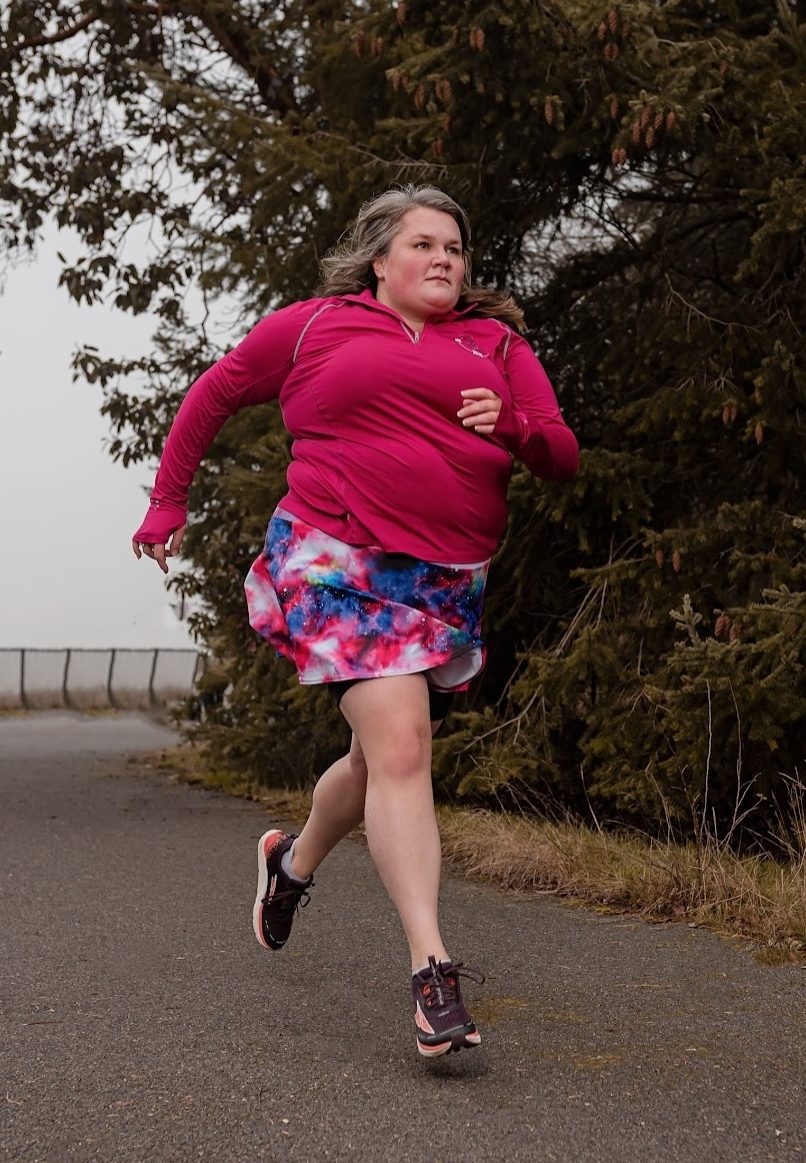Running Essentials for Beginners In Larger Bodies

Start slow; switch to a growth mindset; and find a community. These tenets can get you out the door and started toward a finish line, or at least a running practice (you don’t have to cross a finish line to be a runner). These tenets are great running essentials for beginners in larger bodies, or people who want to approach any kind of movement practice, but have never felt like they belonged in a fitness setting.
What if you’ve adopted these tenets, but you’re not sure how to approach the actual mechanics of running?
Running Essentials for Beginners In Larger Bodies
That’s where it’s important to find resources. Preferably, those would be other runners who have experience with being what many consider a “nontraditional” runner. Personally, I don’t prefer that term, because it still conjures images of a stereotypical “type.” Too many runners imagine that stereotypical runner and think that they must resemble that to be a runner, which is not true at all. Bodies of all shapes and sizes can run. It is true that not every human body can run, and there are many reasons why that may be true. However, if you want to run, the only way to find out whether you can, is to try, and to try in a way that will lead to the greatest chance of success and avoidance of injury. This is your guide on how to get out the front door and take your first running steps.
Step 1: Finding the Right Shoes
Get new shoes. Investing in your shoes is investing in your ability to move the way you want to move, without causing pain or injury. I recommend going to a local run specialty store (LRS) such as Fleet Feet or Road Runner Sports, and have them do a gait analysis (it’s free!), and try out several pairs of shoes. The key here is to make sure that there are no hot spots, pressure, or discomfort in any way. Shoes should not have to be “broken in” – you should be able to go out the front door and run a 5k or more with no blisters or joint discomfort.
Okay, I have new shoes. Do I just start by running out the door?
Nope! Before you start your run, a warmup helps to tell your body that you’re going to be putting in some effort that it’s not used to, so it needs to get ready. A simple 5-10 minute walk is plenty, but a dynamic warmup like the one I use here is even more effective.
After your warmup, pause. Check in with your body, head to toe. Does anything bother you? Any pain or irritation anywhere? Address those spots before you go, if you can.
Once you’ve done a mental check-in, make sure you have at least a watch with a second hand. For your NEXT run it will be helpful if you have a smartphone and can download an app like Interval Timer. For this first run, I don’t want you to do anything except see how long you can run comfortably.
Step 2: Preparing for Your Run
From a standing position with both feet together, lean forward just to the point that you feel you’re going to fall forward. At that point, lift your leg in a little hop, and keep going. There are other tips I’ll cover in future articles, but for now, just see how long you can run comfortably. Use the second hand on your watch to see how long you can run without gasping for breath.
For this first run interval, shoot for as little as five, but no more than 20 seconds of running. After no more than 20 seconds, you should walk. At this point, keep an eye on your watch to see if it takes you longer than one minute to catch your breath. Longer than one minute? Shorten your next run interval until you can recover in less than one minute. Less than one minute to catch your breath? Extend your next running interval by no more than 10 seconds.
Step 3: Starting Your First Run
Do a head-to-toe scan. Ask yourself: Do I feel off-balance? Does anything hurt? Does anything just feel off or weird? Make a mental note of these and be sure to jot it down when you finish. This is also where community comes in. Anything that feels off or weird can be described to a member of your running group (online or in-person) and they often will have a great deal of advice for you.
Listening to Your Body
Plan to spend 20-30 minutes on this run, simply exploring what your body is capable of, and what feels good. Don’t worry about pace or mileage. The goal here is to find the sweet spot where you are able to run comfortably. Running comfortably also means that you recover from that run in one minute or less and are ready to run the next interval.
Next Steps and Resources
If you would like more step-by-step guidance, you can also check out my Running Kickstart, which lays out all the steps to getting you started. Check back next month for more technical tips on how to do a self-check of your form and gait. These running essentials for beginners in larger bodies will make it easier to start and keep consistent.
ADVERTISEMENT

Marci Braithwaite is an RRCA- and USATF-certified running coach who focuses on beginner runners and athletes in larger bodies using Size-Inclusive and HAES-aligned principles. She has completed over 100 races of various distances in her 12 years of running, including a marathon, and she has her sights set on completing a 50k in 2023









